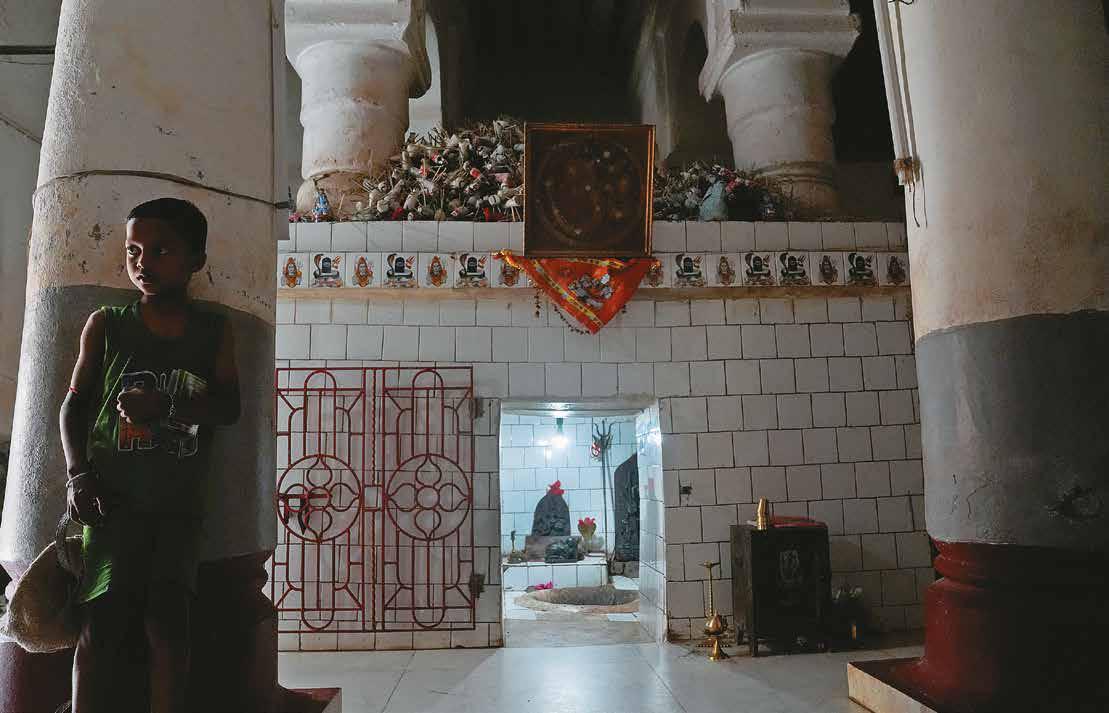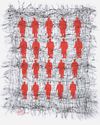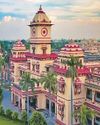He who Rides the Tiger

CHAMARS are not Hindus, Soumen Dey asserts with high confidence. The man in his 20s is agitated. He is a Kayastha. The administration, by allowing Chamar caste members to enter their Shiva temple and worship their deity has ruined the sanctity of their village’s age-old traditions, he complains.
“Their forefathers used to skin dead cows. Only Muslims deal with dead cows. A Hindu will never take anything but milk from a cow,” says Dey, explaining their objections to the entry of Chamars in their religious festivities. Others in the Kayastha crowd that had gathered around nod in approval.
It’s a hot and humid evening in early April. The atmosphere is tense at Bairampur village in Nadia district of West Bengal, roughly 170 km north of Kolkata. The leaves on the trees are as still as the water in the pond.
The Kayasthas feel restless. They are one of Bengal’s three upper caste groups, besides the Brahmins and the Baidyas. In Bairampur, they form the majority. The Chamars, also called Muchis, are a Scheduled Caste (SC) group considered ‘low’ even by some other SC groups.
Less than a fortnight ago, on March 20, the administration deployed police forces to ensure the Chamar caste members’ entry into the local Shiva temple, from which they had been prohibited so far. Now, as the Gajan festival in the last week of Choitro (April 8-14), the final month in the Bengali calendar, nears, the prospect of the Chamar community’s participation in the festival intensifies the Kayastha discomfort.
This story is from the {{IssueName}} edition of {{MagazineName}}.
Start your 7-day Magzter GOLD free trial to access thousands of curated premium stories, and 9,500+ magazines and newspapers.
Already a subscriber ? Sign In
This story is from the {{IssueName}} edition of {{MagazineName}}.
Start your 7-day Magzter GOLD free trial to access thousands of curated premium stories, and 9,500+ magazines and newspapers.
Already a subscriber? Sign In

Coding Careers Climb, Consistently
As digital disruption accelerates, Outlook examines how a premier tech institute is changing the game with steady placement growth and sectoral shifts

Shaping Tomorrow's Leaders
Sri Siddhartha Academy of Higher education: pioneering teamwork and collaboration, offering a transdisciplinary approach for medical, engineering, and management students and research scholars

Building Leaders Through Innovative Education
PIMR Indore is nurturing innovative business leaders, entrepreneurs, thought leaders, policymakers, and agents of social change through research-driven and globally aligned transformative education

Big Dreams, Thin Cast
While India is expanding its foreign service to reflect its evolving role in the world order, it continues to be dwarfed by the diplomatic missions of China and other countries in both size and skill

Engineering Futures
Despite global economic challenges, a premier Indian engineering institute showcases its resilience with robust placement outcomes. Outlook takes a look

Education and Employability
In an ever-evolving employment landscape, Outlook examines a historic Indian university that demonstrates adaptability and growth through its placement outcomes

Shaping Agile Leaders
IMT Ghaziabad achieving excellence and nurturing leadership through knowledge, innovation, tech-readiness, entrepreneurial mindset and sustainability

From placements to Propel'ments
Rather than chasing a dwindling pool of entry-level jobs, young Indians can become creators and deployers of AI solutions that radically boost productivity across sectors

Speak, Memory
V.D. Savarkar is everywhere—in and outside the Andaman Cellular Jail—while the contributions of other revolutionaries who were imprisoned there receive little attention

KIET Flies High in Campus Placement
KIET Group of Institutions, Delhi-NCR, Ghaziabad with an impressive alumni strength of over 20000 students, speaks volumes of its popularity as a hiring campus for top global and Indian companies that abound in Delhi-NCR region
